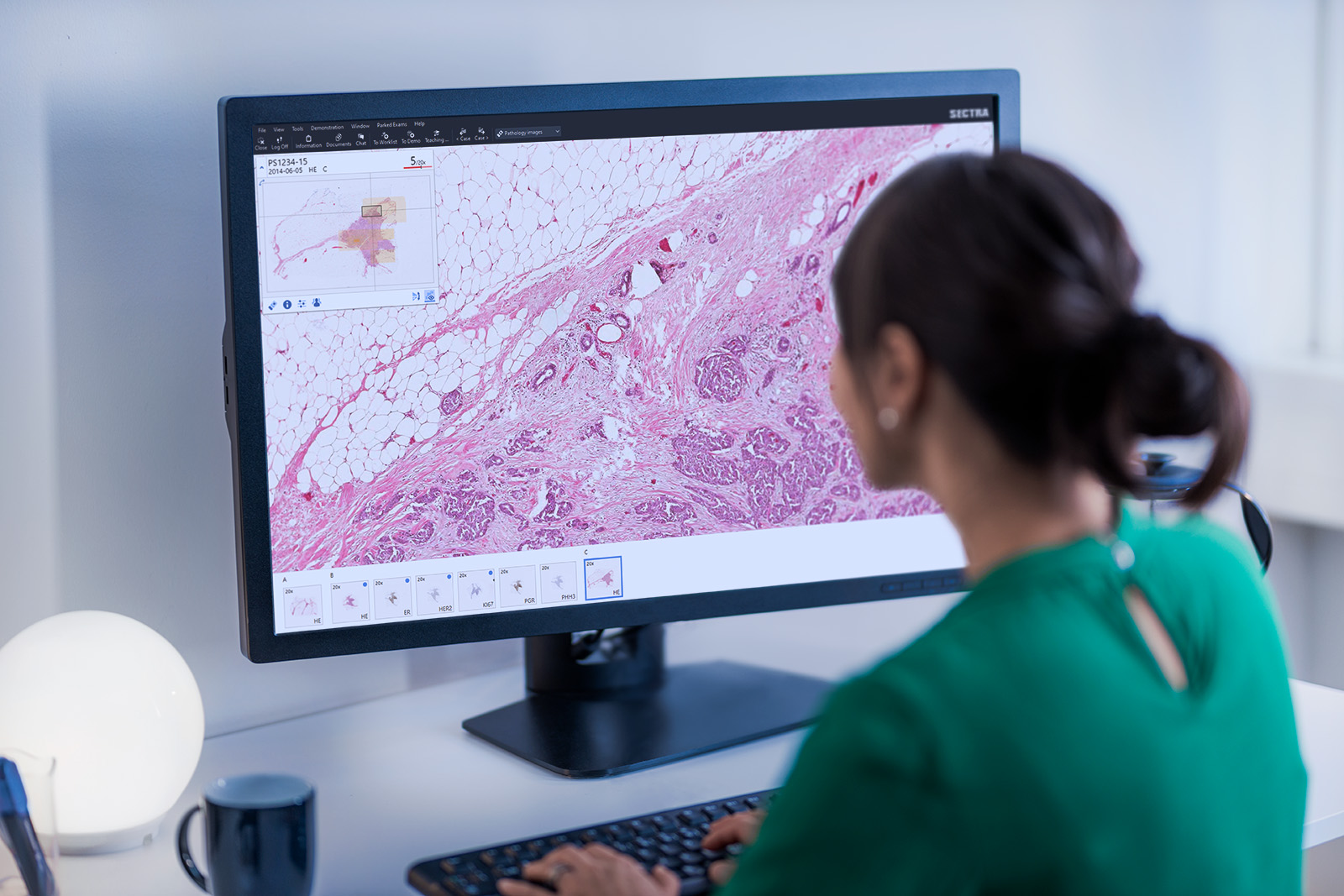The field of pathology imaging is undergoing rapid change. Articles published just two years ago may already be outdated due to the fast pace of innovation. By March 2022, we had tested scanners from seven brands that could deliver whole slide images (WSI) in DICOM format. By December 2023, we had evaluated four more—a significant increase in less than two years. This trend suggests that DICOM is becoming the standard output for new scanners.
Among our clinical customers, DICOM is the most frequently used format, and every month almost 400,000 DICOM WSIs are imported to Sectra pathology solutions around the globe. Many scanner manufacturers are turning to Sectra for verification of accurate DICOM support and compatibility.
While Sectra is not a standardization institute, we have been around since DICOM was introduced and we are willing to provide practical assistance to support the adoption of DICOM in pathology, as a complement to the work being done in the DICOM Working Group 26 and at Connectathons.
Several scanner vendors now work exclusively with DICOM. Those that don’t offer DICOM as a standard are becoming increasingly rare. This is a significant shift from just a few years ago. The primary driver is customer demand. Hospitals and labs are increasingly requesting DICOM compatibility in tenders for pathology scanners and software.
In addition to the image format, adoption of the transfer protocol DICOM C-Store has been even more evident. Since the last article on this topic (A DICOM breakthrough in digital pathology), several scanner vendors have now implemented high volume scanners that have been connected to Sectra solutions via C-Store at customer sites.
Using C-Store offers advantages when it comes to VNA capabilities and future file sharing, since this method reduces the risk of vendor lock-in and improves data accessibility.
Recent observations show that almost 15% of all pathology slides imported to a Sectra system were imported via C-Store. This number is steadily increasing as new labs go live with C-Store, and existing customers are requesting to change their import method to C-Store as well.
In some countries, like Switzerland, we see almost nothing else than C-Store, and other European countries are likely to follow.
With widespread adoption of a standard like DICOM, we can develop new features that leverage this standard. Focusing on a single format allows for faster development compared to supporting multiple formats. Ultimately, this benefits customers by providing them with more value at a quicker pace.
As Elin Kindberg says, there will most likely be functions in the future that will only be available for DICOM images. A standard format will increase the development speed, not only for us but for the entire industry.
While DICOM adoption brings significant advantages, there are also areas for further development. Pathology labs would benefit from faster integration between laboratory information systems (LIS) and scanners to populate the DICOM headers with metadata. This is not a major problem in practice since data can be sent directly from the LIS to the image management system using HL7, but it would be desirable going forward in order to improve consistency.
All future AI models should be trained on DICOM images. This approach will future-proof ongoing work, reduce regulatory uncertainty, and facilitate wider adoption of AI in routine diagnostics. By continuing to embrace these standards, the pathology industry can undergo rapid transformation. This will change the IT landscape and empower vendors to effectively support anatomical pathology labs in their swift digitalization, without needing to understand all of the underlying technical details.
Note: This paper represents Sectra’s view of the status of DICOM in pathology imaging in spring 2024. For an update, contact markus.ralund@sectra.com
